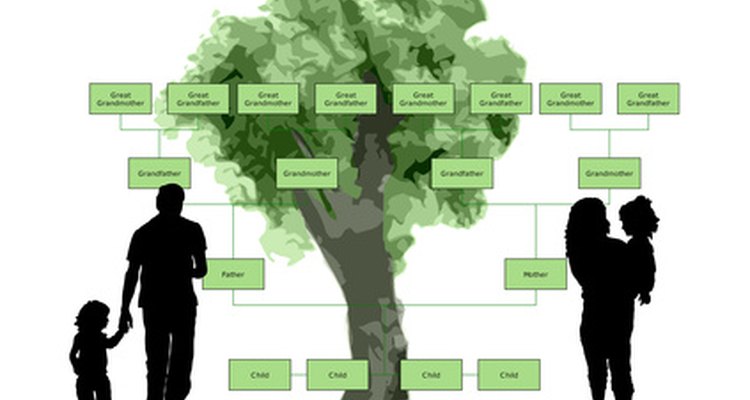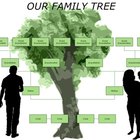
Searching for family history can cost a lot of money, but there are some good ways to find your relatives for free, too.
Talk to the oldest living relatives in your family. Ask them about their parents and grandparents, aunts, uncles, and cousins. Get the names, birth dates and places, marriage dates and places, death dates and places, and burial locations for every ancestor your relative can remember. You should be asking about people your relative remembers, but who died before you were born. This will take you back at least a generation or two beyond your oldest living family member.
Ask your oldest relatives about any children or grandchildren of your ancestors who may be alive today. Find out the names of these people and their last known location.
Write down the names and associated dates and places of each person your relative talked about, using a package of index cards. Put all the information for one person on its own index card.
Divide the filled-out index cards between deceased and possibly living relatives.
Search for more information on your deceased relatives online. You'll find several websites that have extensive genealogical information available at no cost. USGenWeb, RootsWeb, and FamilySearch are all very comprehensive websites full of excellent information, including original records that you won't find anywhere else. Best of all, these sites are all free to use.
Use the information on the index cards you have regarding your deceased ancestors to try to find information on their ancestors. You can do this by searching for their names and birth or death dates in any of the free genealogy websites. Look for hits on their names and read further to discover who their parents and grandparents were. You can go back several hundred years into your family history with ease this way.
Use your legal pad to write down your family tree information as you discover more and more ancestors. Keep everyone in order by using one sheet of paper for each family, keeping parents, children, and children's spouses on one page together. The next sheet of paper should cover the next generation back.
Look for your living relatives. Using the information given to you during your interview with your oldest living relative, look up your living relatives on online phone directory sites. If you have an idea of the age and last known location of the person you're searching for, they will be easier to find.
Write to your living relatives and ask them for further genealogical information. You can write your letter by hand on letter-sized paper, so you won't have to spend money on printer ink. Simply introduce yourself, tell the person how you are related, tell them what you have discovered on your shared family history, and ask them if they know anything further. Include a self-addressed, stamped envelope to make it easy for them to write back to you. Be sure to include your phone number in the letter in case your relatives would prefer to call you.
Expect some relatives to not respond to you. Some people are simply not interested in genealogy or connecting with unknown relatives. Don't take it personally. You will get enough responses from people who are interested to make it worth your while. Some people may even surprise you by sending you copies of photographs of your ancestors, or even birth and marriage certificates that you can add to your family history collection.
Keep everything organized. Create a filing system with tabbed hanging files for each branch of the family you're researching. Within each hanging file, include individual manilla folders for written family tree information, loose notes on index cards, correspondence with living relatives, photographs, and vital records you have received.
Continue looking. Once you have corresponded with living relatives, you may find yourself with more clues for taking your family tree even further into the past. Go back to your computer and those free genealogy websites and use the new information you've received to continue your research. Genealogy is a never ending quest, so you can keep up the research for as long as you like, knowing that you're leaving a valuable lasting legacy for future generations of your family.
Related Articles

How to Trace the History of a Name

How to Find Your Bloodline

How to Make a Family Tree for the 5th ...

How to Trace Your Family Tree for Free

How to Find Out Where Your Family Came ...

How to Find Ancestry in Singapore

How to Find Relatives Alive & Dead

How to Make a Pictorial Address ...

How to Find Obituaries From Over 10 ...

How to Find Someone's Relatives

How to Map German Surnames

Ideas to Write About to a Pen Pal in a ...

How to Download Free Genealogy ...

How to Find Lost Relatives

How to Search for Relatives in Other ...

How to Make a Genogram Chart

How to Write a Letter to a Long Lost ...

How to Change Your Name in New Jersey ...

How to Give a Written Analysis of a ...

How to Design a Family Tree for Free
References
Resources
Tips
- If you find it difficult to keep track of all of the relatives you're finding, you can find a lot of different family tree charts available for free online. Just remember, you'll need a printer to print them out. Family tree charts are excellent for keeping all of your information in an easy to read format.
- If you don't know your older relatives very well, or if they are unable to talk to you due to certain medical conditions like dementia, you can always start your genealogy research by talking to your parents. After all, they knew relatives you didn't know, and can provide good information to get your research going. They can also introduce you to some of those older relatives you may not know well enough to call yourself.
- When talking to your relatives about family history, ask for more than just names, dates, and places. Ask for stories and memories. Write these down, too, and include them in your family history files. It is the family stories and individual memories of the people you talk to that will make your family history truly come alive and be more interesting for others to read.
Warnings
- Be sensitive when conducting your family history interviews. Some relatives may have had difficult or unpleasant experiences in the past that they would prefer to not talk about. Don't push them. You can always look into any dropped subject later, on your own. You would be surprised at how much you can find in online records with even just a small clue from a relative.
- By all means, ask about family rumors and secrets, but don't expect answers. Some people prefer to take their secrets to the grave with them. That great-aunt who had a brother who was supposedly illegitimate may not want to reveal who her brother's biological father really was. Be gracious about it, but don't let it stop you from pursuing the answer in the historical records on your own. Remember, future generations of your family will probably want to know the full truth about your family history and won't find such things as scandalous as the current older generation of your family does.
Writer Bio
Based in sunny Central Florida, Stephanie McKenzie has been writing since 2002. She has authored many instructional articles on a variety of topics in the business, real estate, and law fields, She is also a frequent author of history-related articles for local genealogical and historical societies.
Photo Credits
family tree image by Judy Ben Joud from Fotolia.com